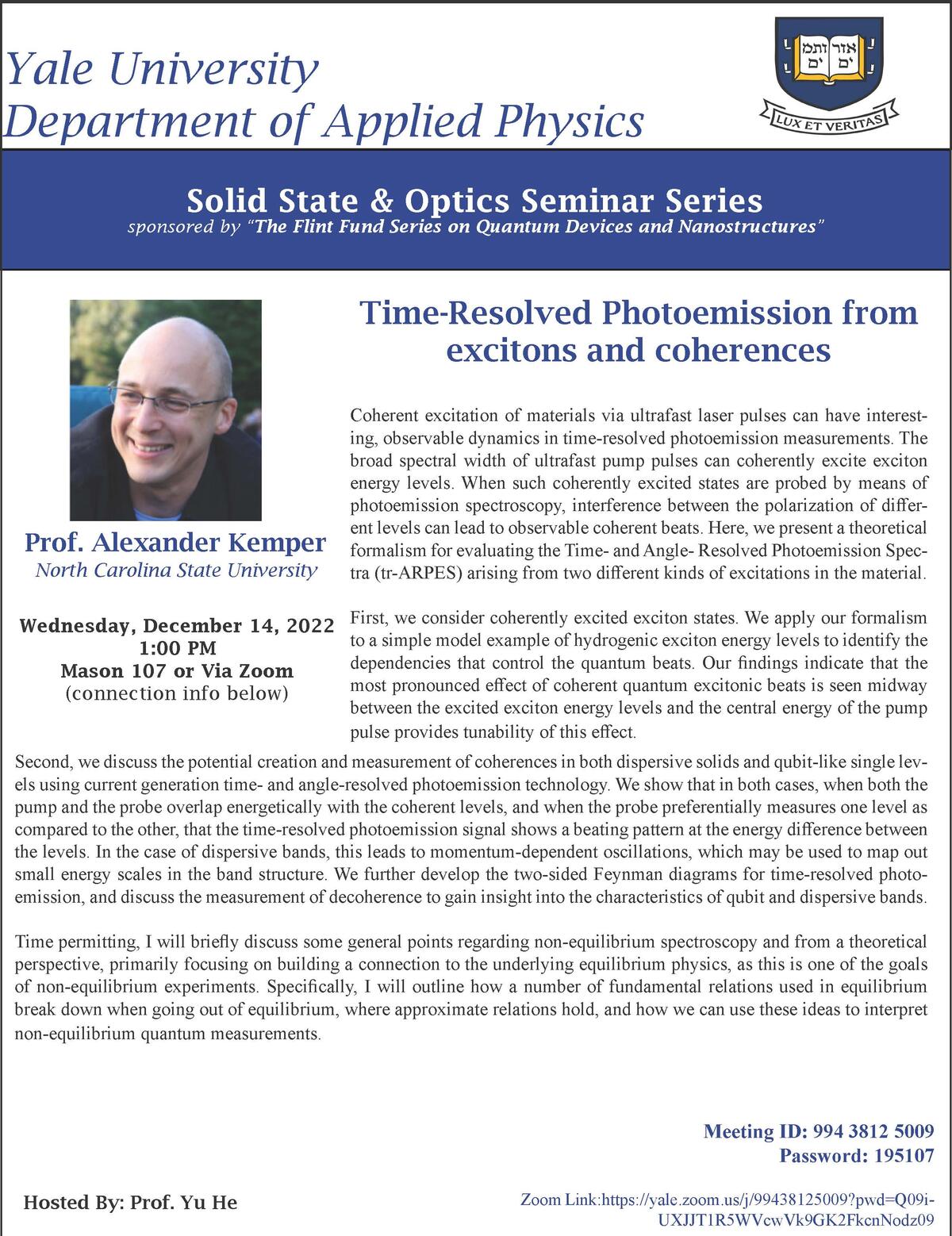Solid State & Optics Seminar
sponsored by “The Flint Fund Series on Quantum Devices and Nanostructures”
Date : Wednesday, 12/14/22
Time: 1:00PM
Speaker: Prof. Alexander Kemper, North Carolina State University
Location: Mason 107
Zoom Link: https://yale.zoom.us/j/99438125009?pwd=Q09iUXJJT1R5WVcwVk9GK2FkcnNodz09
Password: 195107
Title: “Time-Resolved Photoemission from excitons and coherences”
Abstract:
Coherent excitation of materials via ultrafast laser pulses can have interesting, observable dynamics in time-resolved photoemission measurements. The broad spectral width of ultrafast pump pulses can coherently excite exciton energy levels. When such coherently excited states are probed by means of photoemission spectroscopy, interference between the polarization of different levels can lead to observable coherent beats. Here, we present a theoretical formalism for evaluating the Time- and Angle- Resolved Photoemission Spectra (tr-ARPES) arising from two different kinds of excitations in the material.
First, we consider coherently excited exciton states. We apply our formalism to a simple model example of hydrogenic exciton energy levels to identify the dependencies that control the quantum beats. Our findings indicate that the most pronounced effect of coherent quantum excitonic beats is seen midway between the excited exciton energy levels and the central energy of the pump pulse provides tunability of this effect.
Second, we discuss the potential creation and measurement of coherences in both dispersive solids and qubit-like single levels using current generation time- and angle-resolved photoemission technology. We show that in both cases, when both the pump and the probe overlap energetically with the coherent levels, and when the probe preferentially measures one level as compared to the other, that the time-resolved photoemission signal shows a beating pattern at the energy difference between the levels. In the case of dispersive bands, this leads to momentum-dependent oscillations, which may be used to map out small energy scales in the band structure. We further develop the two-sided Feynman diagrams for time-resolved photoemission, and discuss the measurement of decoherence to gain insight into the characteristics of qubit and dispersive bands.
Time permitting, I will briefly discuss some general points regarding non-equilibrium spectroscopy and from a theoretical perspective, primarily focusing on building a connection to the underlying equilibrium physics, as this is one of the goals of non-equilibrium experiments. Specifically, I will outline how a number of fundamental relations used in equilibrium break down when going out of equilibrium, where approximate relations hold, and how we can use these ideas to interpret non-equilibrium quantum measurements.
